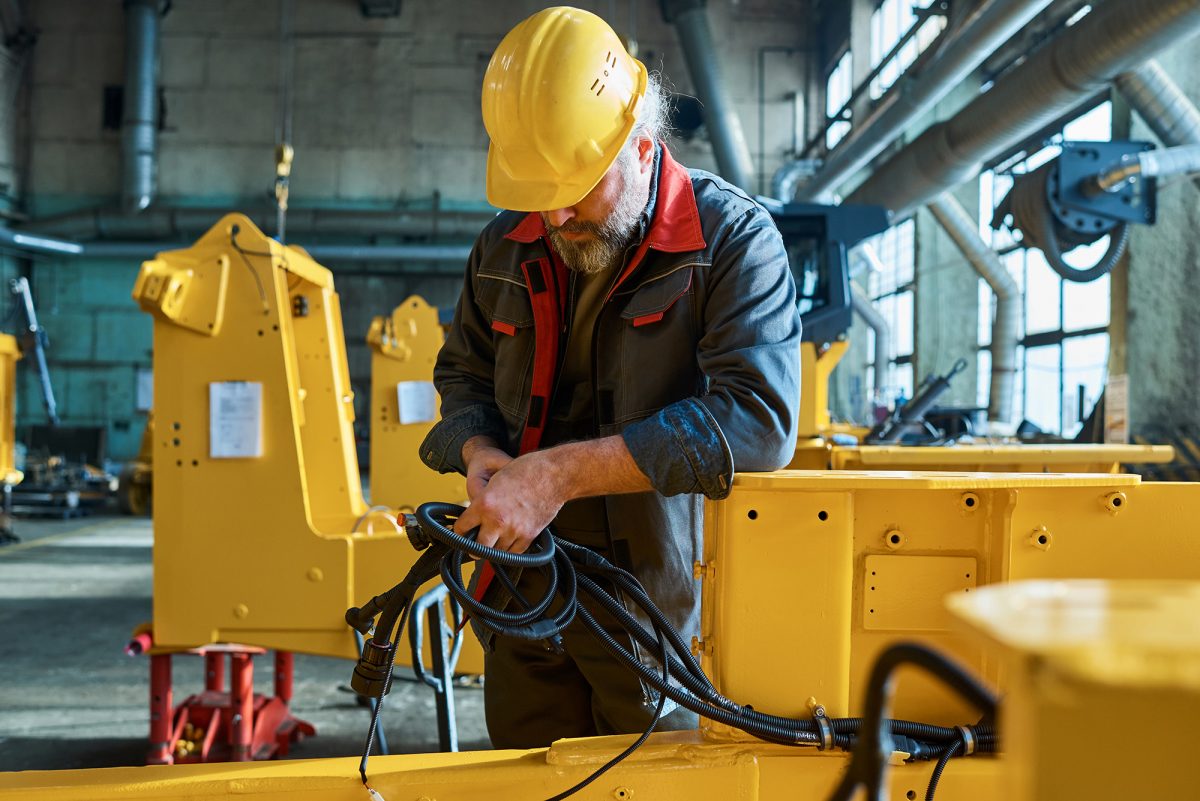
Before you start work, look up and around the site to make sure you and your crew are aware of overhead lines. Ladders, cranes and pipes are all good conductors of electricity, and remember, it does not need to be touching a power line to be energized.
If you spot a fallen wire, keep at least 10 metres away (the length of a full-sized school bus), even if it does not appear to be live. If a wire falls across your vehicle and you can’t drive away from it, do not get out–you could become a path for electricity if you touch the ground. If you must get out for safety reasons, such as fire or possible explosion, hop out clear of the vehicle and land on both feet, then hop or shuffle until you are 10 metres clear of the vehicle.
Electricity can arc or “jump” from the wire to a conducting object like a ladder or a truck. Keep at least 3 metres (length of two park benches) distance between you and overhead distribution power lines and 6 metres (length of three park benches) for high voltage transmission lines at all times.
Find out where it is safe to dig by calling: 1-800-400-2255 or submitting an e-ticket on the Ontario One Call Website. The call is free, and it is the law.
To avoid a potential accident, never stand irrigation pipes near overhead power lines. Always have someone ready to warn you when you are getting too close. Keep at least 3 metres (the length of two park benches) distance between you and overhead distribution power lines and 6 metres for high voltage transmission lines at all times.
Safety training is critical; you hold your workers’ lives in your hands. Do not put them at risk. Ensure that they have the critical safety training they need to go home safely to their families.
When approaching lines be careful. Below are the minimum distances of approach between workers or equipment and power lines:
Greater than 250,000 volt lines: minimum distance is 6 metres or 20 feet (or one giraffe)
Enter your address below to determine your service location for outage information, accessing forms and managing your account.
To better serve you, and make it easier for customers to find the information they’re looking for, we’ve introduced this helpful search tool that will allow you to find the rates, processes, and forms that apply to your account and your community. If you have additional questions regarding this, please email us at customercare@enovapower.com.